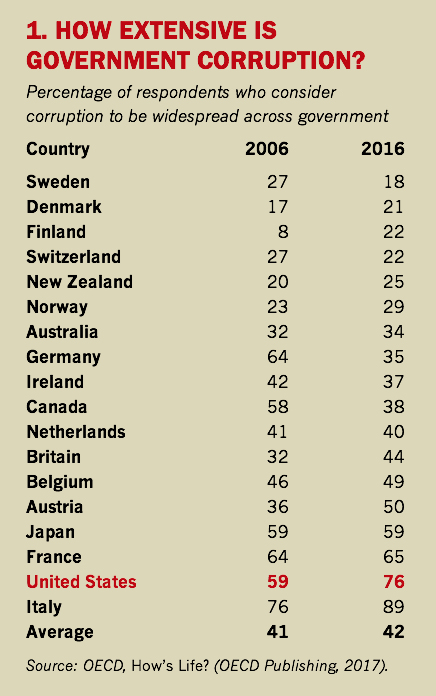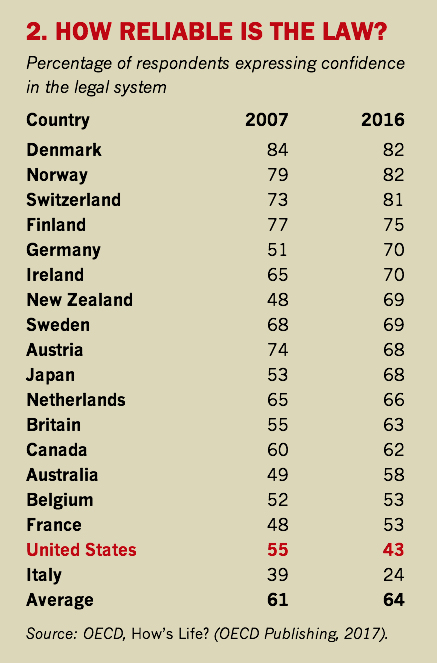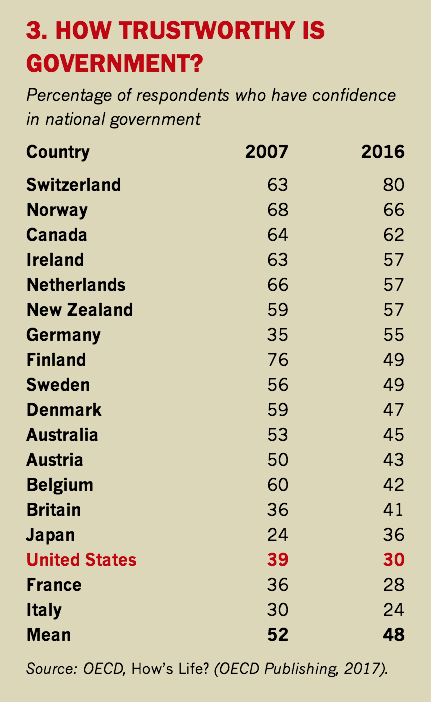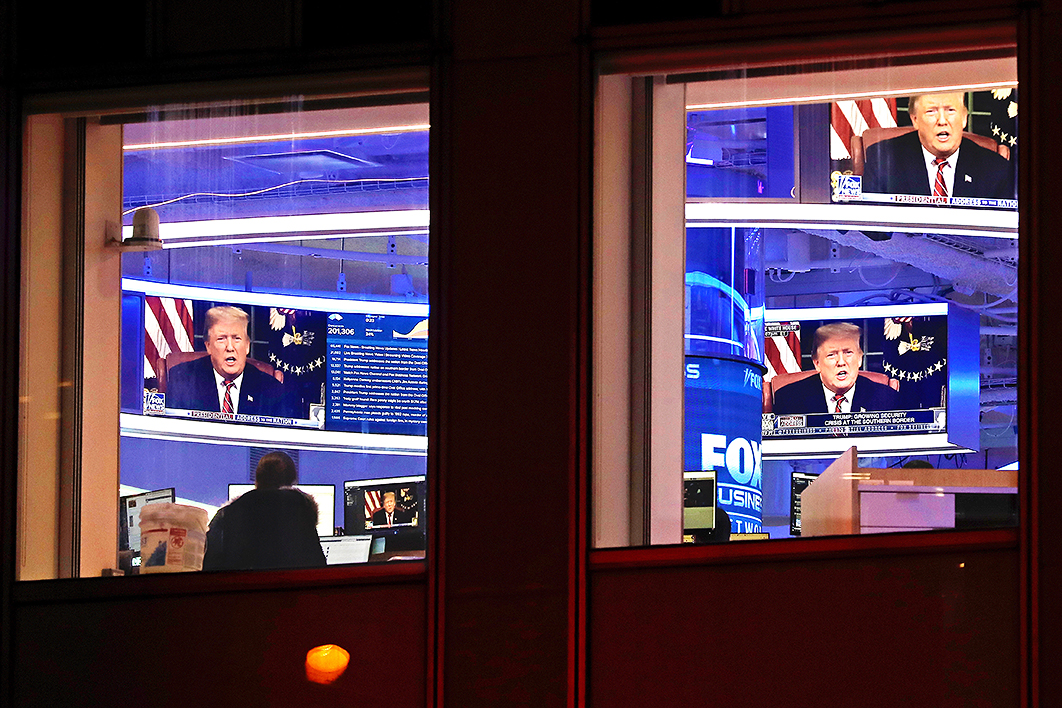God moves in mysterious ways. While most musings about the 2016 presidential election result have been gloomy, for some of the Trump administration’s key figures it was not only a cause for celebration, it was also the result of divine intervention. As Bob Woodward reports in his book Fear, Trump’s first chief strategist, Steve Bannon, and first attorney-general, Jeff Sessions, saw the hand of God in the victory — although sadly God saw fit to dispatch them both soon after.
God’s secret weapon in securing Trump the presidency was the electoral college. The United States is the only democracy in which a popular election for president is mediated through a body made up of representatives of the candidate who wins each state. This system has always had the potential to produce a different majority from the popular vote, and the second-placed candidate has won the college on five occasions — three times during the nineteenth century, and in the twenty-first-century elections that brought George W. Bush (who lost the popular vote by 500,000) and Donald Trump to power.
Trump’s victory produced the biggest-ever discrepancy between the two results. Hillary Clinton won the popular vote by almost 2.9 million votes yet Trump won the electoral college 306–232. Clinton lost the electoral college because of Trump’s narrow victories in three Midwestern states (Michigan, Pennsylvania, and Wisconsin), each by a margin of 0.77 per cent or less, or a total of 78,000 votes in an election at which 136 million votes were cast. God is quite the joker.
With such a knife-edge result, many explanations can plausibly be advanced about what made the difference. Most have focused on the campaign and/or the weaknesses of the defeated candidate. Hillary Clinton’s “deplorables” comment and the deleted emails saga figure most prominently. In particular, her use of a private server for official emails revived memories of Clintonesque arrogance and a willingness to bend rules. The revival of the FBI’s investigation into improper email procedures, made public less than two weeks before the election, gave Trump fresh fuel for his “crooked Hillary” diatribes. It probably didn’t shift many votes to Trump but may have led some people who’d been inclined to vote for Clinton to stay home instead.
Although Trump’s victory was made possible by immediate factors and some improbable contingencies, the very fact that a candidate like Trump would be a serious contender was unthinkable a decade earlier. What broader currents in American society and politics made such a candidacy possible? Many have concentrated — justifiably — on growing inequality, how the living standards of many Americans have stagnated or declined, and also how many reasonably well-off voters still feel they’re losing status. But another clue is to be found in changes in the country’s political culture.
The three charts below all point to growing political alienation in the United States in the decade or so leading up to 2016. Each uses data from eighteen stable, affluent democracies, and each shows that changes in American political culture were homegrown rather than reflecting international trends.
Chart 1 shows that the proportion of Americans who thought corruption was widespread in government rose (from an already high level) by 17 percentage points over the decade. Among the eighteen democracies as a whole, the average figure barely changed. Indeed, several countries — Germany, Canada and Sweden — moved strongly in the opposite direction. America is second last, ahead of that perennial wooden-spooner, Italy.

Chart 2 reveals a similar picture. Across the eighteen democracies, citizens’ confidence in the legal system actually rose slightly. But in the two bottom countries — the United States and Italy — confidence declined further. In 2016, barely half as many Americans, proportionally, had confidence in their legal systems as Danes, Norwegians and Swiss.

The figures in Chart 3 are not so stark, but show similar trends and ordering. In terms of citizens’ confidence in their national government, the United States, France and Italy were at the bottom of the table in 2016. Again, countries moved in opposite directions in these nine years, with America one of several to experience a substantial decline.

So, on these three measures of political disaffection, the United States rates almost at the bottom among eighteen democracies, and on each measure Americans showed a substantial decline, more substantial than in most other countries. Why was political alienation in the late Obama era so much greater than it was in the late George W. Bush era? And why is the United States such an international outlier over this period?
To the external observer, it is far from clear that corruption had become more widespread, or that the legal system and national government had become worse under Obama. What, then, accounts for the sharp fall in public approval?
The answer, I suggest, is found in changes in American political culture, driven by trends in both the Republican Party and the media, and especially the influence of Fox News. While much of America rejoiced at Obama’s 2008 victory, the new presidency immediately energised the far right of the Republican Party. Most strident was the Tea Party, which gained growing influence inside Republican ranks after its formation in early 2009. It was a powerful force in Republican primaries, where its main targets were what its leaders call RINOs (Republicans in Name Only). Any congressional figures who seemed too friendly to Obama’s policies were targeted. The most endangered species in American politics became the moderate Republican.
The rise of the Tea Party was aided by constant sympathetic publicity from Fox News. Fox’s chief executive for the twenty years from its creation in 1996 was former Republican propagandist Roger Ailes. The most obvious feature of Fox is the outrageous and intolerant claims of its far-right commentators, but its more important and distinctive appeal comes from relentlessly driving its own news agenda.
An insightful critic of the trend to “media tribalism” is ex-president Obama. He believes that “a Balkanised media” contributed to the partisan rancour that worsened during his tenure, bemoans the absence of a common baseline of facts underpinning political debate, and accuses Republicans of peddling an alternative reality.
The first two decades of Fox were accompanied by a growing partisan divide in terms of Americans’ attitudes to the media. In 2002, according to Pew surveys, 76 per cent of Republicans and 67 per cent of Democrats thought Fox News was believable; by 2012 the figures were 67 per cent and 37 per cent. So the partisan divide had increased from 9 to 30. In attitudes to Fox’s main competitor, CNN, 84 per cent of Democrats and 72 per cent of Republicans thought the network could be trusted in 2002. By 2012, the parallel figures were 76 and 40. The partisan divide had grown from 12 to 36. So overall attitudes to the news media declined somewhat in the decade, but the more important trend was the contrasting movements among party supporters.
Trump exploited and then escalated these trends. More than any other president, whether by instinct, strategy or an inability to do otherwise, he has practised the politics of polarisation. By many conventional measures this is not working well for him. A Washington Post–ABC News poll in late January 2019 found 56 per cent of Americans said they would “definitely not” vote for Trump in 2020, while just half that number (28 per cent) said they definitely would. This follows the midterm elections in November 2018, where Democrats secured 52.5 per cent of the vote to Republicans’ 45.8 per cent, a further swing of over 4 per cent since the 2016 elections.
Yet, in other ways, his strategies are bearing political fruit. His constant denunciations of fake news and the media as the enemy are having an impact among his base. According to Pew, in 2016, the last year of the Obama presidency, around three-quarters of both Republicans and Democrats endorsed the idea that criticism from news organisations keeps political leaders from doing things that shouldn’t be done (Republican 77 per cent; Democrat 74 per cent). But by the second year of the Trump presidency, 2018, the percentage of Democrats taking that view had climbed to 82 per cent, while the percentage of Republicans had halved to 38 per cent. Across at least fifteen Pew surveys under six presidents, this is the lowest percentage of Republicans endorsing the sentiment, and the biggest gap between supporters of the two major parties.
In the same survey, 12 per cent of Democrats said they had not much or no trust in the information they got from national news organisations, compared with 38 per cent of Republicans.
Assuming Trump doesn’t retire in triumph in 2024 after being re-elected in 2020, one prediction is safe. Whether his exit is brought about by electoral defeat or by some politico-legal process, it will not be dignified or gracious. He and his supporters will allege bad faith, fraud and conspiracy.
During the political turmoils in America in 1968, Republican candidate Richard Nixon pronounced that “there is nothing wrong with this country that a good election wouldn’t fix.” Many critics of Trump feel the same. But American political culture is deeply fractured, and the jaundiced Fox News view of the mainstream media and of all political participants to its left has attracted a constituency sufficient to make it difficult for the next presidency to be a time of healing. •




